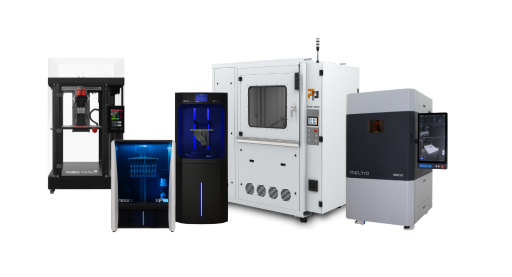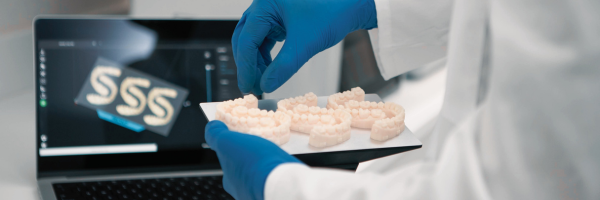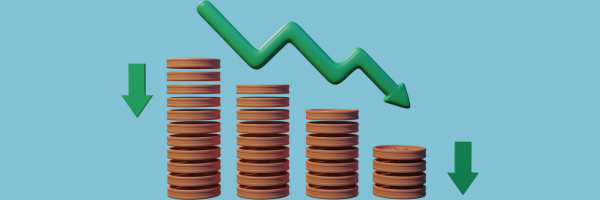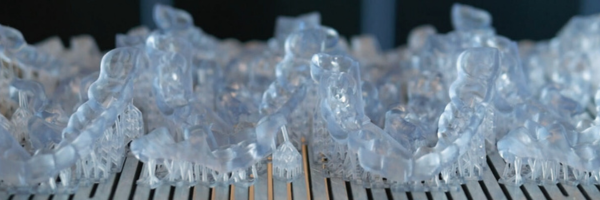3D printers
High quality 3D printers

Dental problems are commonplace, even with careful attention. In the Netherlands, expenditure on dental care is growing steadily, with billions of euros spent on treatments and implants. However, the rise of additive manufacturing does not promise a change in the causes of dental disease, but it does offer innovative solutions to improve treatments and reduce costs. Discover how this technology is transforming dental industry.

Before we get to the many possibilities of 3D printing in dentistry, we must first clarify which of the many different technologies within additive manufacturing are suitable to fulfill these possibilities for the dental industry. The answer to this question is also quickly given: 3D printing with resin.
Resin 3D printing, in which liquid biocompatible resins harden using UV light, has long guaranteed the rapid and detailed production of various indications and devices for dentistry thanks to its enormous precision and the wide range of available materials that are special designed for the dental industry.
The subcategory of the resin 3D printer basically plays a subordinate role. Whether stereolithography (SLA), Digital Light Processing (DLP), Lubricant Sublayer Photo-curing (LSPc®) or PolyJet™ - all these technologies are capable of producing high-quality parts, although certain details, such as speed, may vary. To get a more detailed overview of the individual subcategories of resin 3D printing, read our extensive blog on resin 3D printing.
In addition to resin 3D printing, 3D printing with powder is also suitable for illustrative models and prototypes. However, fully functional indications are not yet possible with this printing technology. That is why 3D printing with resin remains, at least for the time being, the only option for additive manufacturing.

So now we all know the ideal 3D printing technology for dentistry well and good. But how exactly can additive manufacturing help make the dental industry more productive?
3D printing offers several advantages over traditional subtractive manufacturing. One of the biggest advantages, especially in the dental industry, is the high speed of 3D printers.
Many dental diseases cause severe pain to patients and even if the waiting time for the correct indication can be bridged with painkillers, this is still associated with great discomfort for the patient. Additive manufacturing makes it possible to deliver the help patients hope for more quickly, increasing their satisfaction and comfort.
Additive manufacturing methods have also reached extremely high levels in terms of precision. Especially when it comes to fine details, which are essential for many indications in the dental industry, 3D printing can eclipse conventional production methods.
The greater design freedom that additive manufacturing offers offers another important advantage: individuality. No two rows of teeth, jaw shapes or alveolar processes are identical. It is therefore essential that dental indications are accurately tailored to the individual patient to ensure functionality, patient safety and comfort.
However, the benefits of 3D printing in dentistry don't just start with production; the process surrounding it is also simplified and improved by additive manufacturing.

Digitalization in dentistry does not only start with production, but long before that, namely during impression making.
While traditionally a negative mold of the oral area is created by the patient's bite on alginate or polyether, which is then filled with plaster, additive manufacturing works exclusively digitally and therefore uses intra-oral scanners to create an image of the teeth or jaw to obtain.
Such intra-oral scanners offer several advantages. On the one hand, the level of detail is much higher than with conventional prints, and on the other hand, correcting errors is greatly simplified because this can be easily carried out on the digital model. At the same time, operating costs for the dental practice can be minimized because new impression materials do not have to be constantly purchased and the reduced space requirement for the practice should not be underestimated.
This reduced space requirement is achieved through the digital storage of the patient image, which has another major advantage: the complete digitization of the patient file. No more printed images in brown and beige folders, but long-term storage as a CAD model, which also makes it much easier to compare multiple images over time, which can be especially important during long-term treatments.
Additive manufacturing not only improves production, but also makes the entire internal process more efficient. And in-house is the right keyword here, because additive manufacturing allows dental practices to produce their indications in-house, which is another advantage.

Just a few years ago, dental 3D printing was the exclusive preserve of large dental laboratories due to its high cost and complexity. However, the widespread adoption of desktop 3D printing solutions has broken this oligopoly, allowing smaller dental labs and even dental practices to benefit from additive manufacturing.
This increased availability, especially for dental practices, provides enormous benefits for both patients and dentists. It means shorter waiting times for patients and lower costs for dentists, because there is no more middleman between them and their indications.
However essential the quality of the indications and the well-being of the patient are, ultimately the cost of the work and production must be worth it. Fortunately, 3D printing also scores highly in this aspect of dentistry.
Dental materials for 3D printing are generally in a similar price range to traditional materials for subtractive manufacturing. However, where additive manufacturing outperforms subtractive manufacturing is in material economics – and therefore cost efficiency. Subtractive manufacturing involves removing material to produce a specific part or indication, with a significant amount of waste. While with additive manufacturing the part is built up layer by layer, resulting in little to no production waste.

Now that the benefits of additive manufacturing within the dental industry have been outlined, it is of course essential to highlight the tools and indications that can be additively manufactured.
The classic application of 3D printing in dentistry is all kinds of models. Whether simple illustration models, models with stamps or models with crown edges to check the fit. The high degree of individualization is particularly important here, as it allows models to be produced that can accurately reproduce the characteristics of each individual patient.
Another long-standing application is custom impression trays. Although intraoral scanners are becoming increasingly popular and offer many advantages, classic impression trays are still widely used and, thanks to 3D printing, they can be produced more individually, faster and with higher quality.
Individual surgical guides from the 3D printer are also very popular among dentists, because autoclavable and biocompatible surgical guides for, for example, the placement of implants can now be ideally produced additively.
The list of indications for which additive manufacturing is currently used is long. All types of splints, grinding, transfer or occlusal splints, dentures, bridges and crowns can now be produced using high-quality additives.
While most materials were not suitable for use on the human body when 3D printing first became widespread in dentistry, there are now several manufacturers producing and selling materials for short-term contact, e.g. Class IIa, or for permanent contact with the human body.
This now enables the additive manufacturing of permanent dental prostheses, which entails much higher costs and waiting times in conventional production. Unfortunately, the choice of manufacturers and materials for such permanent indications is still relatively limited – but the future will almost certainly bring further development and progress.

While the gradual digitalization of the dental industry began in the 1970s with the first digital scans and progressed with the first 3D printers in the 1990s, progress was for a long time only very pale - especially for patients.
However, dental 3D printing has been flourishing for several years. In particular, the spread of desktop 3D printing solutions has led to a renaissance in dental digitalization. More and more dentists are switching to additive manufacturing for their indications and more and more dental laboratories are offering the option to purchase 3D printed parts.
This trend is unlikely to stop in the future. The benefits of additive manufacturing are too great. However, where exactly the research will take us is still written in the stars. What new indications, materials and printing solutions will be added is still a mystery.
But once these secrets are revealed, you can be sure that a new article on the advancements in the dental industry will be eagerly awaited. Are you curious about the current solutions of additive dental production? Then visit us at the Dental Expo fair and talk to our dental expert! You can get a free ticket via this link.